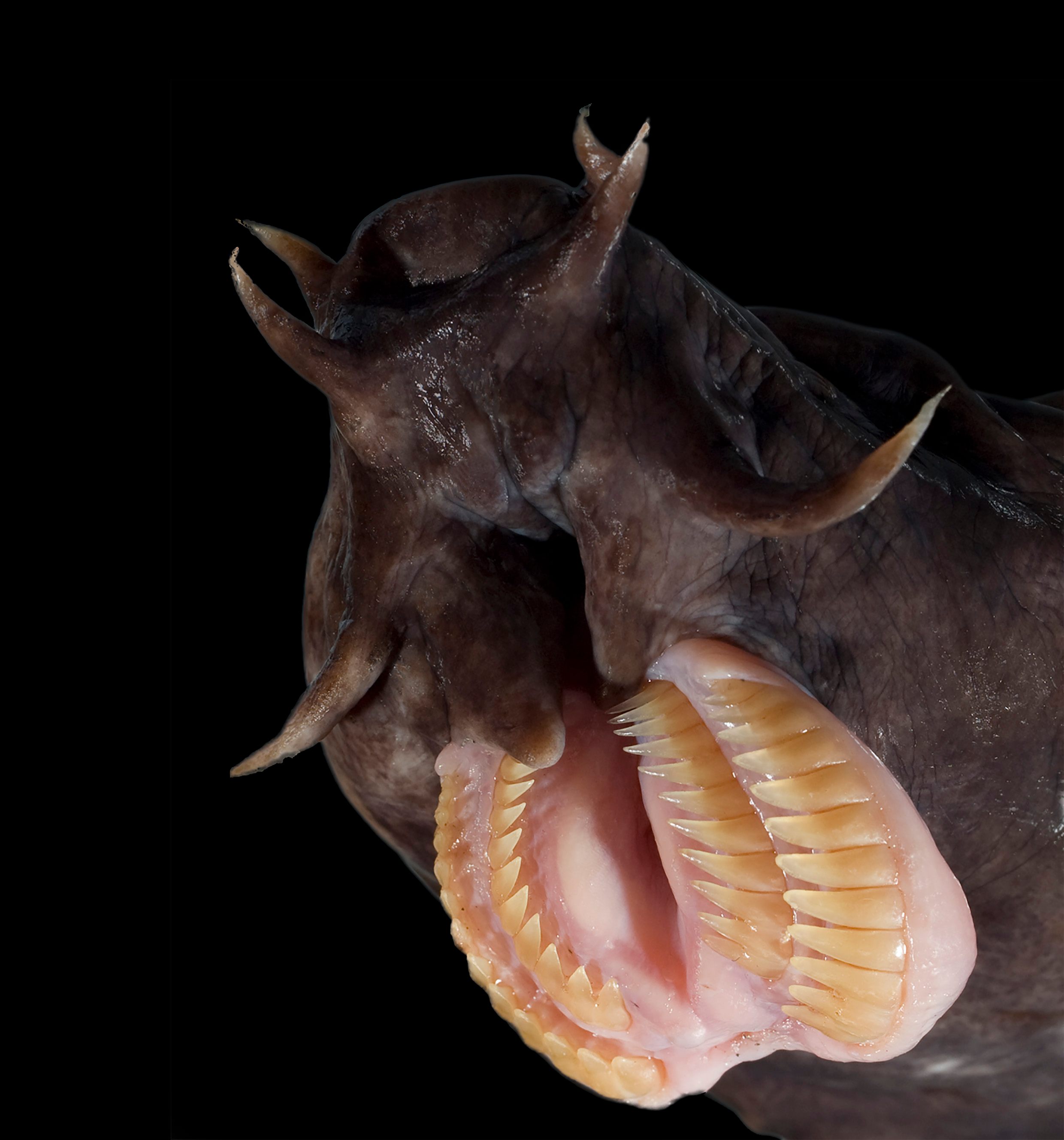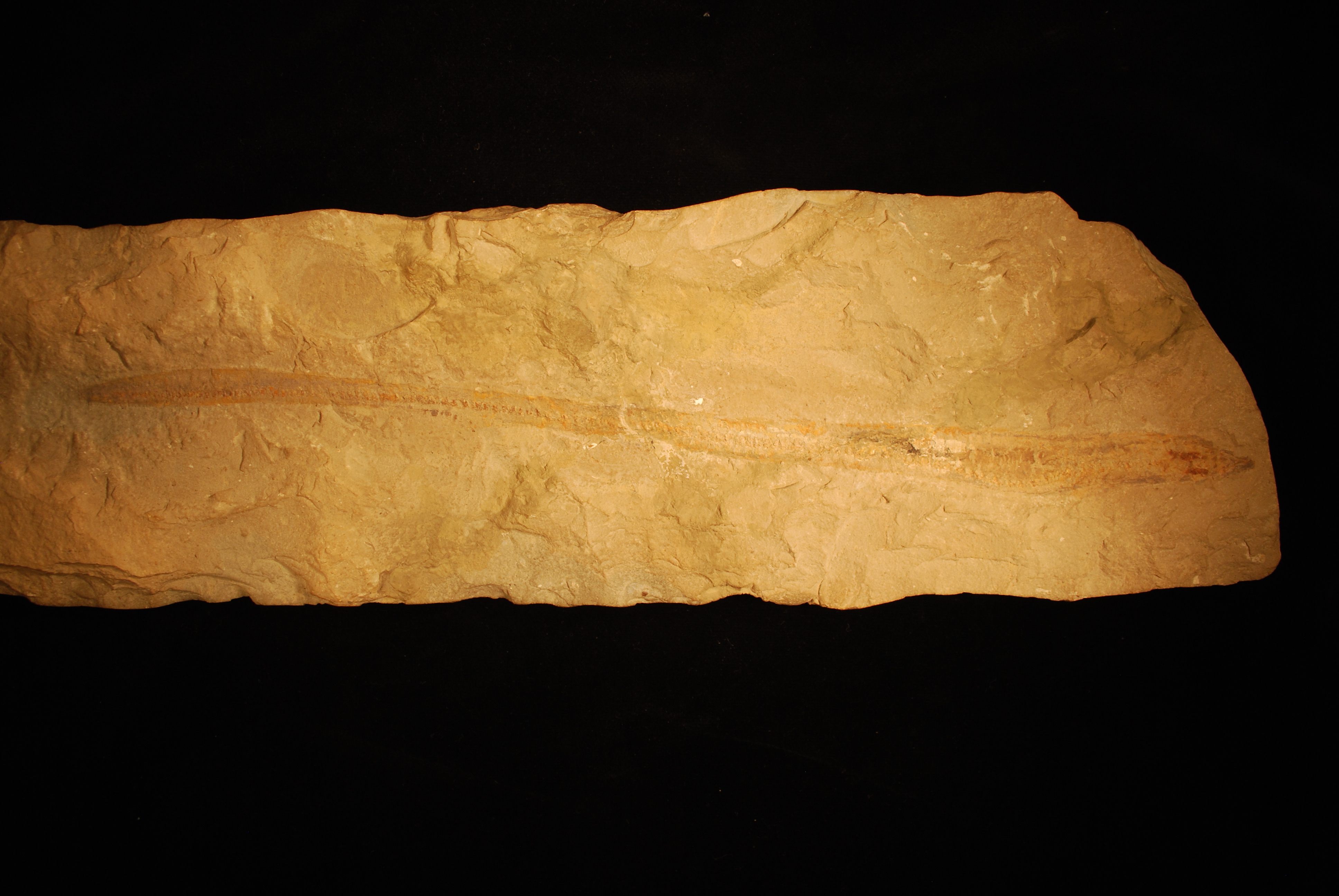Found: The First Fossil of the Slime-Spewing Hagfish
It helps us reconsider our own origins, too.

We all have a cousin like the hagfish, right? One who uses a prickly tongue to skin its prey, and fends off its enemies by suffocating them with slime? Depending on which hypothesis you subscribe to, these ancient, eel-like assailants reign near the base of our common vertebrate family tree. It would seem to explain a lot.
New research, however—published yesterday in the Proceedings of the National Academy of Sciences—supports another theory: that the hagfish was separated long ago from the lineage that spawned more modern fish and other vertebrates (like us). Perhaps we need to take more ownership of our most vicious tendencies.
The research focuses on the first proper hagfish fossil ever found—a 12-inch long, 100-million-year-old specimen caked into limestone from the Cretaceous period, bearing telltale evidence of slime production. (The fossil was uncovered in present-day Hjoula, Lebanon.) Slime may not seem like the kind of substance primed to fossilize, but it was precisely the hagfish’s rare, viscous defense mechanism that helped the researchers properly identify the fossil.
The giveaway was the keratin found in synchrotron scans of the specimen. In self-defense, hagfish can deploy tightly coiled keratin fibers, like balls of yarn that unfurl instantaneously upon reacting with ions in the water, explains the study’s lead author Tetsuto Miyashita, of the University of Chicago. The fiber balls then trap water within, sliming up the surroundings so that predators can no longer breathe. The fossil contained more than 100 concentrations of keratin; this, combined with the fossil’s age, suggests that hagfish were using slime against such ancient adversaries as plesiosaurs and ichthyosaurs. Today, says Miyashita, the slime is still a major nuisance to fishermen, who have to powerwash their nets that emerge crusted in the cobweb-like residue.

Any hagfish fossil, souped-up with evidence of the animal’s slimy defense system, would have been an impressive discovery no matter what. The fossil is particularly important, however, because it helps to clarify the hagfish’s murky position within evolutionary history. According to a press release, scientists studying hagfish have been divided over what the limited evidence suggested. An older hypothesis held that hagfish and lampreys—similarly intimidating (if tastier) bloodsuckers of the bottom of the sea—made up separate branches on the evolutionary tree that led to more typical fish and, well, us. In this telling, says Miyashita, the two groups were considered “living fossils” that, because they still appear so primitive, must retain many characteristics of our common ancestors from more than 500 million years ago.
Those researchers focused on the genetics, meanwhile, have argued that hagfish and lampreys are related to each other, but not to other vertebrates. They ought to be studied as a separate group, and our common vertebrate ancestor ought to be reimagined as a more typical fish. Miyashita’s research reinforces this latter hypothesis, but does so by fusing—for the first time—fossil analysis with genetic analysis. Maybe we’re not as much like the hagfish as we thought, or wished, or feared.



Follow us on Twitter to get the latest on the world's hidden wonders.
Like us on Facebook to get the latest on the world's hidden wonders.
Follow us on Twitter Like us on Facebook